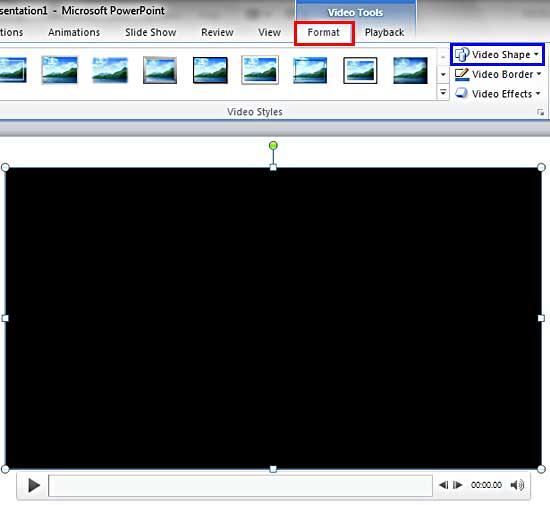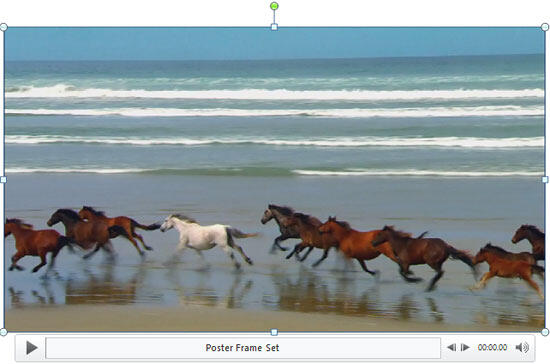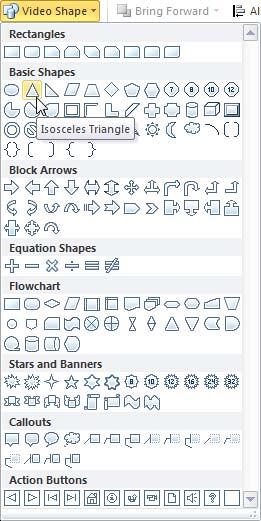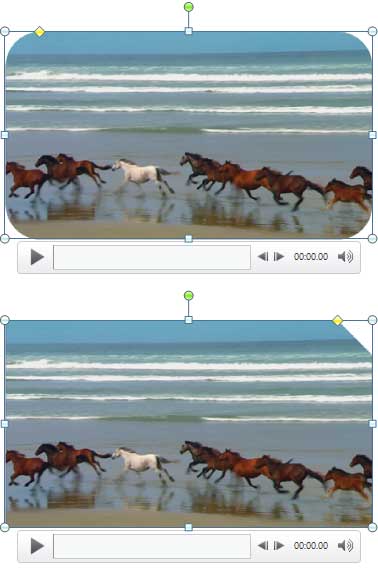When you insert a video clip within a PowerPoint slide, you'll find it placed as a traditional rectangular shape. And that's exactly what most users expect, since it seems safe and conventional. However, PowerPoint 2010 does allow you to have your video playing in different shapes such as a circle or oval, a wave, a triangle, or any of the shapes that PowerPoint includes. Just the fact that a video can be placed within a shape is no reason to forego the conventional rectangle. Do remember that most other shapes may crop out important parts of your video clips.
Follow these steps to constrain your video to play within a specific shape in PowerPoint 2010 for Windows:
- Open your presentation, and navigate to the required slide where you have already inserted a video clip. Select or double-click the video clip to bring up the two Video Tools tabs in the Ribbon. These two tabs are Format and Playback. Click the Format tab to activate it, as shown highlighted in red within Figure 1, below.

Figure 1: Video Tools Format tab of the Ribbon Contextual Tab
- The Video Tools Format tab is a Contextual tab. Contextual tabs are special tabs in the Ribbon that are not visible all the time. They only make an appearance when you are working with a particular slide object which can be edited using special options.
- When you insert a video on your slide, it may display a black rectangle on the slide, as shown in Figure 1, above. If your video clip does not show a black rectangle, then directly proceed to Step 3.
- If you see the black rectangle in place of the video clip, then the Live Preview you see will show a black fill within the actual shape applied to your video clip. This happens because you see a black rectangle instead of a frame associated with the video clip. To make sure you see a video frame during live preview, add a Poster Frame to your video clip, so that way you will see a video frame in the place of black rectangle, as shown in Figure 2, below.

Figure 2: Video clip with a poster frame added - Within the Video Tools Format tab, locate the Video Styles group and click the Video Shape button, as shown highlighted in blue within Figure 1, above, to access the Video Shape drop-down gallery, as shown in Figure 3, below.

Figure 3: Video Shape drop-down gallery
Are Video Shapes the Same as Conventional Shapes?
- The Video Shape drop-down gallery is similar to Shapes gallery in PowerPoint 2010.
- Now, select any shape from the Video Shape drop-down gallery that suits your requirements. For this tutorial, we have chosen the Isosceles Triangle, as shown in Figure 3, above.
- This step constrains the selected video within the Isosceles Triangle shape. Play your video at least once to ensure that no important parts get cropped out. Figure 4, below, shows the previously inserted video is now playing within the Isosceles Triangle.

Figure 4: Video within the Isosceles Triangle shape - Once the shape of the video is changed you can use Video Effects, Video Border, or the Video Styles to enhance its look.
Choose Shapes Similar to a Rectangle
- Try using shapes that are similar to a conventional rectangle such as a Rounded Rectangle or any of the Snipped rectangles, as shown in Figure 5, below. This way you can prevent large areas of the video from being cropped out when a shape is added.

Figure 5: Shapes similar to a rectangle work good as Video Shapes
- Make sure to save your presentation.







